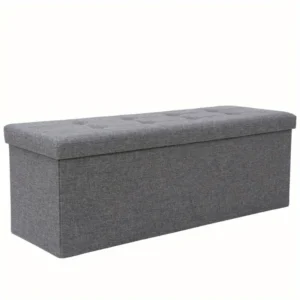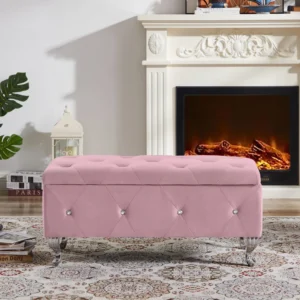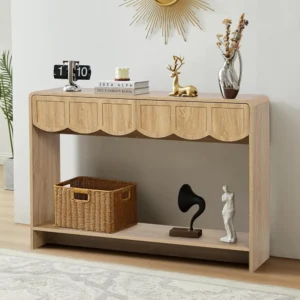Introduction
Living in modern homes often means working with limited square footage, especially in urban areas where space comes at a premium. Those awkward corners that seem impossible to utilize effectively can actually become some of the most functional areas in your home with the right approach. Corner benches offer an ingenious solution to transform these overlooked spaces into practical, stylish havens.
These versatile pieces do more than just fill empty corners—they maximize seating capacity, create visual interest, and often incorporate valuable storage options. Whether you’re dealing with a cramped kitchen, tiny entryway, or compact living room, corner benches blend functionality with aesthetic appeal in ways traditional furniture simply cannot.
In this guide, you’ll discover practical design ideas, essential planning tips, and clever styling advice to make the most of your tight spaces. The philosophy of “Where Function Meets Style” perfectly embodies how transform entryway space-saving benches can revolutionize your home’s usability without compromising on appearance.
Why Corner Benches Are Perfect for Small-Space Living
Corner benches excel at making the most of limited square footage, turning previously wasted areas into functional zones that serve multiple purposes. Their space-efficient design offers numerous advantages for small homes:
- Maximized utilization: Corner benches reclaim often-neglected corners that would otherwise remain empty or underused
- Increased seating capacity: A corner bench with a small table can seat up to 6 people in the same footprint where traditional chairs might only accommodate 4
- Built-in storage options: Many designs include lift-tops, drawers, or cubbies to store items out of sight
- Enhanced visual flow: By keeping furniture against walls rather than floating in the room, traffic paths remain clear and unobstructed
- Architectural interest: Corner configurations add character and definition to otherwise plain, boxy rooms
- Customizable dimensions: Unlike standard furniture, corner pieces can be tailored to fit your exact space requirements
- Multi-functionality: Depending on design, they can serve as dining seating, reading nooks, workspace extensions, or entryway solutions
The versatility of corner benches makes them particularly valuable in apartments and small homes where every inch counts. Innovative space-saving entryway ideas that incorporate corner benches can effectively double the functionality of these typically tight areas.
Essential Planning Considerations Before You Begin
Before diving into a corner bench project, proper planning ensures you’ll create a solution that truly meets your needs and fits your space perfectly. Follow these essential steps:
Measure thoroughly: Take precise measurements of your corner space, including width along both walls, height constraints, and depth available. Don’t forget to account for baseboards, which can affect how flush your bench sits against the wall.
Define primary function: Determine exactly how your corner bench will serve you—dining area, reading nook, entryway seating, or multi-purpose station. This decision influences every aspect of your design.
Select appropriate materials: High-traffic areas like entryways benefit from durable, easy-clean surfaces like solid wood or performance fabrics, while dining areas need stain-resistant options. Your complete guide choosing compact bench should account for both practical needs and aesthetic preferences.
Map traffic patterns: Ensure your corner bench doesn’t obstruct natural pathways through the room. Allow at least 36 inches for walking spaces around the bench and any accompanying furniture.
Account for architectural elements: Note the position of windows, electrical outlets, heating vents, and radiators that might affect placement or require design modifications.
Consider lighting needs: Assess whether your corner will need additional lighting for reading, dining, or workspace functions.
Establish your budget: Weigh the costs of custom-built versus ready-made options, factoring in materials, labor (if applicable), and any required accessories.
Evaluate design compatibility: Choose styles, colors and finishes that complement your existing décor for a cohesive look.
Kitchen & Dining Corner Bench Designs
The kitchen and dining area are perhaps the most natural locations for corner benches, where they create cozy, space-efficient eating areas. These best corner benches modern homes showcase how function and style can perfectly merge in the heart of your home.
L-Shaped Dining Banquettes: The Classic Space Maximizer
L-shaped banquettes remain the most popular corner bench configuration for dining areas, offering an elegant balance of comfort and space efficiency:
- Design versatility: Can be symmetrical (equal length on both sides) or asymmetrical (longer on one side) to accommodate different room layouts
- Table pairings: Works best with round, oval or pedestal tables that allow easier access without sharp corners
- Mixed seating: Combining the L-bench with movable chairs on opposite sides creates flexible seating that accommodates different numbers of diners
- Integration options: Choose between built-in designs that create a custom look or freestanding pieces that allow for future reconfiguration
- Space requirements: Allow approximately 24 inches of bench length per person and at least 18 inches between bench edge and table for comfortable seating
A standard L-shaped banquette can comfortably seat 5-6 people while taking up 25-30% less floor space than a traditional table with individual chairs.
Floating Corner Benches: Modern Space Illusion
Wall-mounted or “floating” corner benches create a contemporary look while maximizing both actual and perceived space:
- Visual lightness: The space beneath creates an illusion of openness that makes small rooms feel larger
- Installation considerations: Requires proper wall anchoring to support weight (typically needs to mount to studs or solid wall)
- Cleaning benefits: The open space underneath simplifies floor cleaning and prevents dust accumulation
- Modern aesthetics: Clean lines and minimal bulk complement contemporary design schemes
- Storage options: Some designs incorporate slim drawers or flip-up seats that don’t compromise the floating appearance
These space-conscious designs typically support 250-300 pounds per 3 feet of bench, making them suitable for everyday use while maintaining their sleek profile.
Multi-Functional Storage Corner Benches
Combining seating with storage creates the ultimate space-saving solution—particularly valuable in homes where closet space is limited. These versatile pieces deliver double functionality without requiring additional square footage.
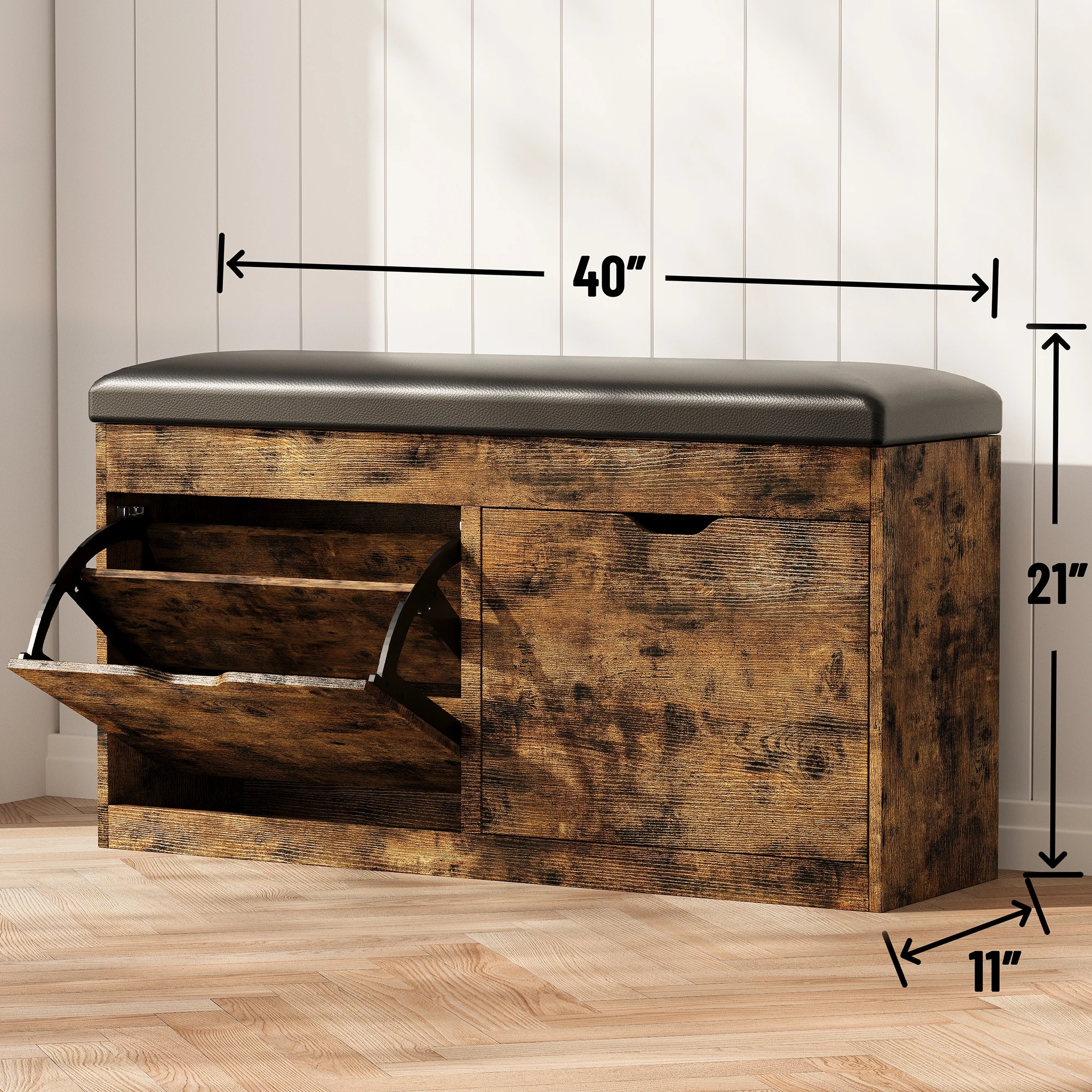
Our corner entryway bench collection offers excellent examples of how storage and seating can coexist beautifully in tight spaces. Key storage configurations include:
- Lift-top storage: Maximizes interior capacity for bulkier items like blankets, off-season gear, or rarely used kitchen appliances
- Drawer systems: Provide organized access to smaller items without removing cushions or disrupting seated guests
- Open cubbies: Offer convenient placement for everyday items, decorative pieces, or storage baskets
- Combination approaches: Integrate different storage types to accommodate various needs (e.g., drawers for small items, open shelving for shoes)
- Material considerations: Solid wood construction ensures durability for frequently accessed storage components
Lift-Top Storage Solutions: Hidden Capacity
Lift-top designs offer the most generous storage capacity while maintaining a clean, uncluttered appearance:
- Quality mechanisms: Look for hydraulic or pneumatic hinges that open smoothly and prevent lids from slamming shut
- Weight capacity: Premium models support 30-40 pounds of lid pressure when open without strain
- Ideal contents: Perfect for seasonal items, extra bedding, board games, or bulky kitchen equipment
- Safety features: Soft-close hinges and finger-friendly gaps prevent pinched fingers during operation
- Ventilation considerations: Some designs include subtle air holes to prevent mustiness when storing fabric items
The typical lift-top corner bench can store the equivalent of a medium-sized trunk—approximately 6-8 cubic feet of storage space—while serving as functional seating.
Beyond Dining: Alternative Corner Bench Applications
Corner benches extend far beyond dining areas, offering creative solutions for multiple rooms and purposes throughout your home.
The Welcoming Entryway Solution
A corner bench transforms even the smallest entryway into an organized arrival zone that sets the tone for your entire home:
- Space-efficient organization: Combines seating for putting on/removing shoes with storage for everyday essentials
- Footwear management: Incorporates shoe cubbies, racks, or under-bench storage to keep floors clear
- Vertical integration: Works with wall-mounted hooks, shelves, or mirrors to maximize functionality without expanding footprint
- Material durability: Weather-resistant fabrics and easy-clean surfaces withstand dirt, moisture, and heavy use
- Style statement: Creates an impactful first impression while solving practical entry needs
Our corner hall tree options beautifully demonstrate how multiple entryway functions can coexist in a compact corner footprint. These pieces typically accommodate storage for 4-6 pairs of shoes, outerwear for 2-4 people, and essential items like keys, mail, and bags.

Finding effective ways to organize small entryway bench spaces can transform your daily routine, creating a smooth transition between outside and inside your home.
Other valuable applications for corner benches include:
- Reading nooks: Paired with good lighting and cushions to create cozy retreats
- Home office corners: Providing additional seating or work surface extension
- Mudroom alternatives: For homes without dedicated mudrooms
- Window seat opportunities: Utilizing corner windows for light-filled relaxation spots
Design Styles to Match Any Interior Aesthetic
Corner benches adapt beautifully to any design preference, from ultra-modern to traditionally classic. Our small entryway bench collection demonstrates this versatility across multiple styles:
Modern Minimalist: Clean lines, hidden storage, and monochromatic or two-tone color schemes with materials like lacquered wood, metal, and performance fabrics
Rustic Farmhouse: Distressed finishes, natural wood tones, woven baskets, and classic detailing like beadboard or shiplap backing
Mid-Century Modern: Tapered legs, organic shapes, walnut tones, and geometric fabric patterns that evoke retro charm with contemporary functionality
Contemporary Fusion: Mixed materials like wood with metal accents, glass elements, or concrete components that create visual interest
Transitional Balance: Blending traditional silhouettes with updated finishes and materials for timeless appeal that works in diverse settings
Industrial Edge: Raw materials, exposed hardware, metal frameworks, and reclaimed wood that bring workshop-inspired character to residential spaces
The key to successful corner bench design is selecting a style that complements your existing furniture while addressing your specific functional needs.
DIY vs. Ready-Made: Making the Right Choice
Deciding between custom building and purchasing a pre-made corner bench depends on several factors:
| Consideration | DIY Approach | Ready-Made Solution |
|---|---|---|
| Cost | $200-600 for materials | $400-1500+ depending on quality |
| Time Investment | 10-30 hours depending on complexity | Immediate to 2-week delivery |
| Skill Required | Moderate woodworking and finishing | None (assembly may be needed) |
| Customization | Unlimited size and design options | Limited to available products |
| Space Fit | Perfect for non-standard corners | May have gaps or overhang |
| Quality Control | Dependent on your skills | Consistent professional finish |
Custom work makes the most sense when:
– Your corner has unusual angles (not 90 degrees)
– Exact dimensions are critical for your space
– You have specific material or finish requirements
– Built-in appearance is desired
Ready-made options work best when:
– Standard 90-degree corners are available
– Quick implementation is important
– Woodworking skills are limited
– Professional finish is a priority
Coat Rack Shoe Bench, Corner Entryway Bench, Corner Hall Tree, Shoe Bench for Entryway
$313.58 Select options This product has multiple variants. The options may be chosen on the product pageEntryway Bench with Shelf Storage, Shoe Bench for Entryway, Shoe Storage Bench
$194.08 Select options This product has multiple variants. The options may be chosen on the product pageCorner Entryway Bench, Entryway Bench with Cushion, Modern Entryway Bench, Shoe Bench for Entryway
$476.34 Select options This product has multiple variants. The options may be chosen on the product pageEntryway Bench with Cushion, Small Entryway Bench
$466.79 Select options This product has multiple variants. The options may be chosen on the product page- Price range: $785.40 through $897.63 Select options This product has multiple variants. The options may be chosen on the product page
Farmhouse Entryway Bench, Narrow Entryway Bench, Shoe Bench for Entryway, Shoe Shelf Bench
$482.78 Select options This product has multiple variants. The options may be chosen on the product page
Styling Your Corner Bench to Enhance Small Spaces
The right accessories and styling approaches can dramatically enhance your corner bench’s appearance and functionality:
- Cushion considerations:
- Choose 2-3 inch thickness for dining benches for proper table height alignment
- Select 4-5 inch thickness for reading nooks and entryway seating for comfort
Use water-resistant or performance fabrics in high-traffic or spill-prone areas
Pillow arrangements:
- Add 2-3 contrasting throw pillows in corners to soften right angles
- Use varied textures (velvet, linen, knits) to create visual interest
Select colors that pull from your existing decor palette for cohesion
Lighting enhancements:
- Install wall sconces above reading corners to eliminate floor lamp needs
- Add under-bench LED strips for nighttime pathway illumination
Consider pendant lighting for dining corner benches
Space-enhancing colors:
- Light, neutral bench colors make spaces appear larger
- Strategic pops of color draw the eye and create focal points
- Consistent color themes between bench and surrounding areas create cohesion
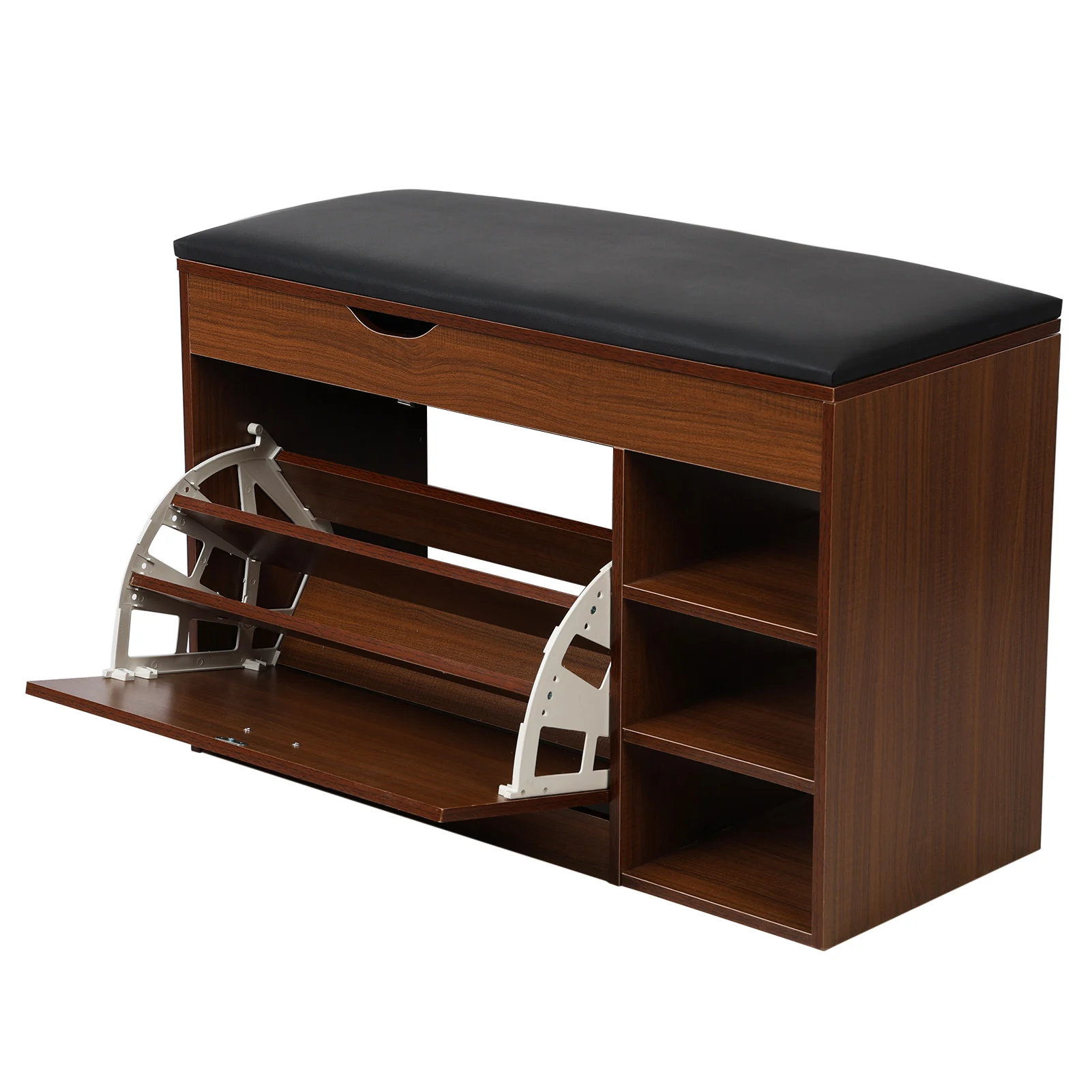
Our shoe storage bench options demonstrate how practical storage can be beautifully styled to enhance rather than detract from your space.
Smart Solutions for Common Corner Challenges
Corner spaces often present unique challenges that require creative solutions:
Non-90-degree corners: Use adjustable-angle brackets or custom-cut pieces to accommodate unusual angles; alternatively, create a floating corner with small gaps at the wall
Radiator interference: Design benches with ventilation grates, heat-resistant materials, or raised sections that allow proper airflow around heating elements
Low window obstacles: Create split-level bench designs that step down beneath windows while maintaining functional seating and storage
Electrical outlet access: Incorporate discreet cutouts in the bench back or base for cord management, or integrate power strips into the design
Accessibility concerns: Consider benches with removable sections, height-adjustable features, or partial open access for users with mobility needs
Traffic flow issues: Opt for rounded outer corners and appropriate bench depth (18-20 inches for dining, 22-24 inches for casual seating) to prevent traffic disruption
For particularly challenging spaces, our narrow entryway bench collection offers slim-profile solutions that work in even the tightest corners.
Frequently Asked Questions
What’s the minimum space needed for a functional corner bench?
For a basic L-shaped corner bench with seating on both sides, allow at least 30 inches extending from the corner on each wall. For dining purposes, you’ll need additional space of at least 30 inches from the bench edge for a table.
How can I make sure a corner bench is comfortable for extended sitting?
Select cushions with high-density foam (2.5-3.5 pounds per cubic foot), provide proper back support with an angle of 95-100 degrees, and ensure seat depth of 18-22 inches for optimal comfort.
What weight capacity should I expect from a quality corner bench?
Well-constructed corner benches should support 250-350 pounds per seating section. Built-in designs with proper wall anchoring can support even more weight.
How do I clean and maintain different bench materials?
Wood frames require dusting and occasional polishing; upholstered sections benefit from regular vacuuming and prompt stain treatment; and storage components should be emptied and wiped down seasonally to prevent dust buildup.
Can corner benches work in spaces that aren’t perfectly square?
Yes! Custom solutions or adjustable designs can accommodate angled corners, curved walls, or irregular spaces with proper planning and measurements.
Understanding how to create a transform space ultimate guide multi-use corner bench can help you address these and other common concerns when designing your space.
How to Choose the Perfect Corner Bench for Your Space
Use this practical checklist to evaluate your needs and find the ideal corner bench solution:
- Space assessment:
- Measure corner dimensions including wall lengths and height restrictions
- Note any obstacles (outlets, vents, windows)
Determine available floor space for any accompanying furniture
Priority ranking:
- Rate importance of storage vs. seating capacity vs. style
- Identify primary function (dining, entryway, reading nook)
Consider how frequently the bench will be used
Pre-purchase questions:
- Is assembly required? What tools are needed?
- What are the exact dimensions and weight capacity?
What materials are used for frame, seating surface, and any storage components?
Quality indicators:
- Solid wood construction for frames rather than particleboard
- Reinforced corners with proper bracing
- Smooth-operating hinges, drawer glides, or other moving parts
- Even, detailed finishing with no rough edges
Take time to test comfort when possible, sitting for at least 5-10 minutes to assess cushion firmness and back support before committing to a purchase.
Conclusion
Corner benches represent one of the smartest ways to transform challenging tight spaces into functional, beautiful parts of your home. By embracing these often-underutilized corners, you gain valuable seating, storage, and style without requiring additional square footage.
Whether you’re creating a cozy dining nook, an organized entryway, or a peaceful reading corner, the principles of thoughtful planning, quality construction, and cohesive styling apply. Remember that corners aren’t design challenges—they’re opportunities to showcase creative problem-solving that enhances your daily living experience.
With proper measurement, clear functional priorities, and attention to quality details, your corner bench can become one of the most used and appreciated features in your home. The transformation from awkward empty corner to functional haven is just a matter of seeing the potential that’s been there all along.
For those seeking compact seating solutions throughout their homes, exploring best small benches entryways can provide additional inspiration for space-saving design.



